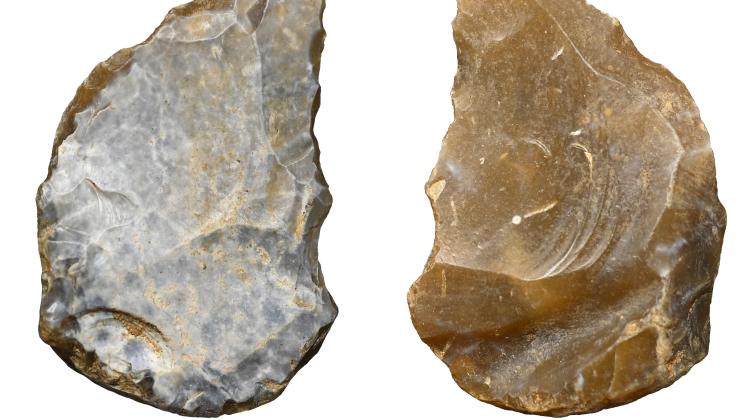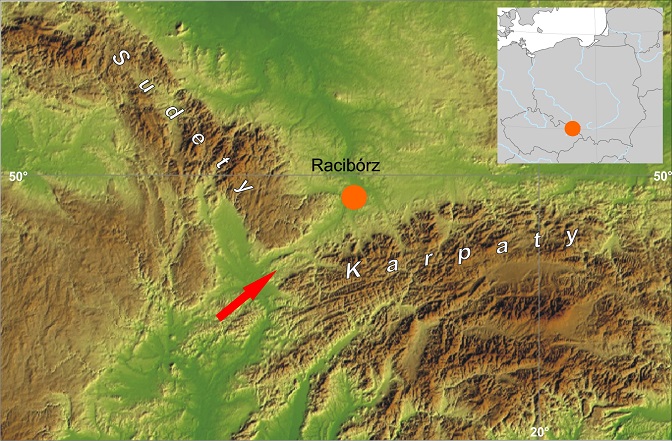Neanderthal Stone Tools Discovered in Poland

Archaeologists working in Racibórz have discovered stone products from at least 130,000 years ago. These are the oldest traces of human presence in the foreground of the Moravian Gate and proof that Neanderthals visited this region several times, leaving stone products at the bottom of the river valley.
Archaeological work in the western part of Racibórz, called Studzienna, has been carried out for two years by an international team of archaeologists, geologists, and physicists from the University of Wrocław, the Friedrich-Alexander University in Erlangen-Nürnberg, the University of Silesia in Katowice, and the Czech Academy of Sciences in Prague, in cooperation with the Museum in Racibórz.
‘Our goal was to expose a part of the slope of the old sand pit to collect information about the geological structure and take the necessary samples to determine the age of the sediments using radiometric methods. Quite unexpectedly, we came across stone artefacts, including tools,’ says Dr. Andrzej Wiśniewski from the University of Wrocław and head of the Department of Stone Age Archaeology.
The finds point to the important role of the Racibórz Valley and the Moravian Gate area in the maintenance and development of the human population at that time.

The stone products discovered at a depth of 10 m below the ground surface were found in sediments deposited in the cold period approximately 130,000 years ago.
It was a time of reconstruction of the natural environment after a long-term, probably bicyclic cooling, during which the Scandinavian ice sheet advanced to the area of the Ostrava Valley. A huge barrier lake was formed in front of the ice sheet. This barrier disappeared only about 140-130,000 years ago, opening the possibility of free movement of people and animals from the south to the northern lowland areas.
Based on the number of finds discovered in systematically explored archaeological excavations, scientists assume that the area of the former sand pit may still hide several dozen thousand products located in at least three layers.

‘This is a basis for stating that after a long break caused by extremely unfavourable climatic conditions that prevailed in the period of approximately 160-140 thousand years ago, this area became attractive for people coming from the south,’ the archaeologist says.
The research, financially supported by the National Science Centre as part of the Opus competition, provided examples of semi-raw materials and stone tools, which proves that people in this place engaged in various activities, from preparing weapons to hunting and butchering.
‘It should be noted that, unlike the areas south of Racibórz and the Moravian Gate, where there are no such good siliceous raw materials, in the Odra Valley area there are and were deposits of erratic rocks with the desired properties, located in the area of valley depressions.
However, we believe that the migrations whose traces we discover in Racibórz were also organized for other reasons, namely the need to obtain appropriate food during the annual cycle of migrations of hunters and gatherers,’ says Dr. Wiśniewski.
The unexpected discoveries of stone products also opened a discussion about the patterns used by stone tool makers at that time.
According to the archaeologist, the recent discoveries show that tools with double-sided surfaces, asymmetric in outline, somewhat reminiscent of today’s wide-bladed knives, played a very important role.
The edges of these tools are shaped with a single strike running parallel to the edge. Similar tools are known from only a few archaeological sites from that period, located north of the Carpathians and the Alps. It cannot be ruled out that they were associated with specific activities, e.g. butchering hunted animals.
The dating of a human presence in the area of the find was made in the laboratory of the Silesian University of Technology in Gliwice, more precisely in the Gliwice Absolute Dating Methods Centre, thanks to the use of an innovative technique based on optoluminescence.
Dr. Wiśniewski says that the results are largely due to new methods used during excavations, as well processing the results in the privacy of offices and laboratories. During the search, the sediments are carefully sifted to extract all stone artefacts and archaeological excavations and geological layers are documented with a 3D laser scanner and a series of photos to obtain photogrammetric models. ‘Digital copies’ of historical objects are also made with 3D scanning.
According to archaeologists, the work in Racibórz confirms the need to return to already known places, in this case the river site.
‘Interestingly, this specific path of archaeological searches in river valleys for the oldest manifestations of human presence in the Pleistocene was set at the beginning of research on the Palaeolithic, which took place in France nearly 200 years ago. So it was not the caves, but the open valley sites that opened the discussion on the prehistoric origins of man,’ says Dr. Wiśniewski. (PAP)